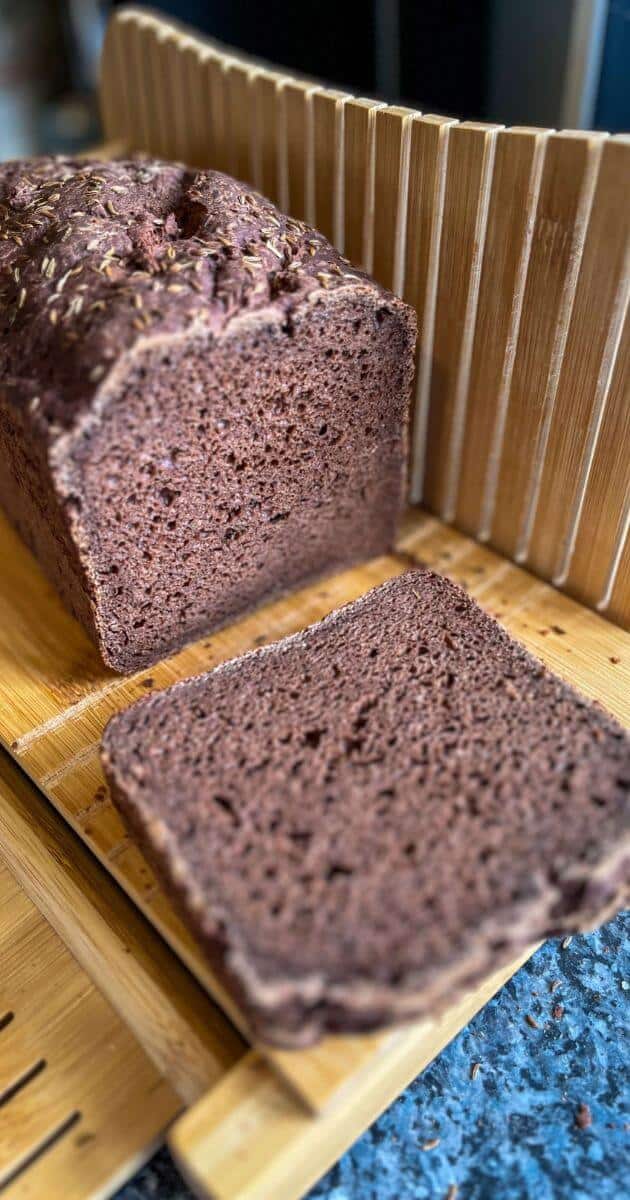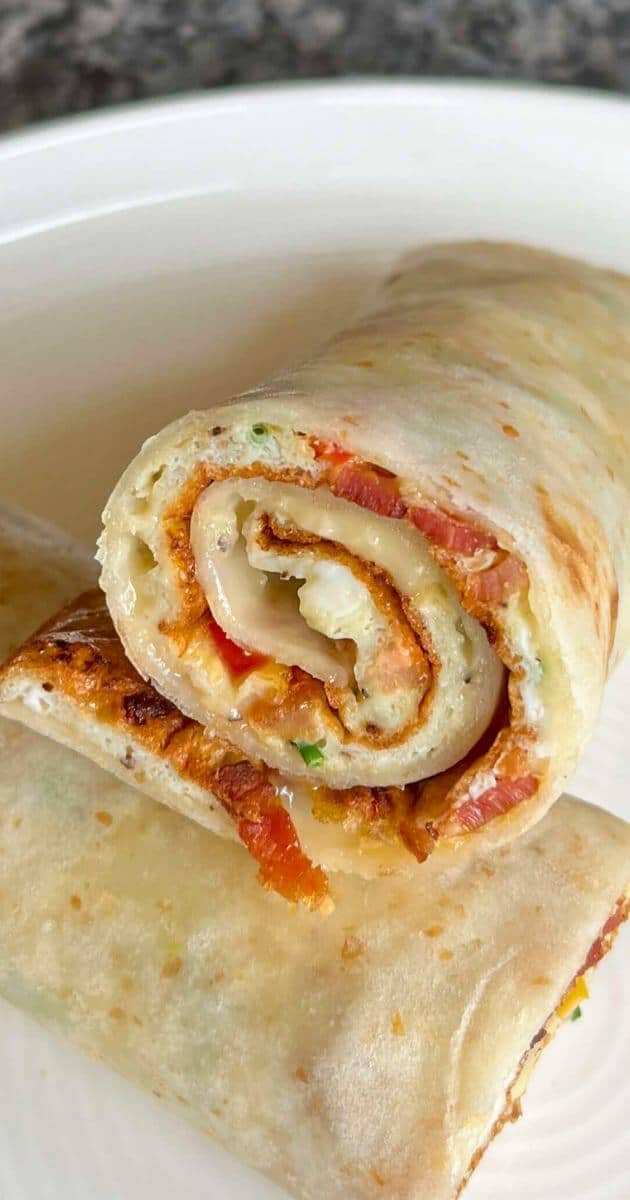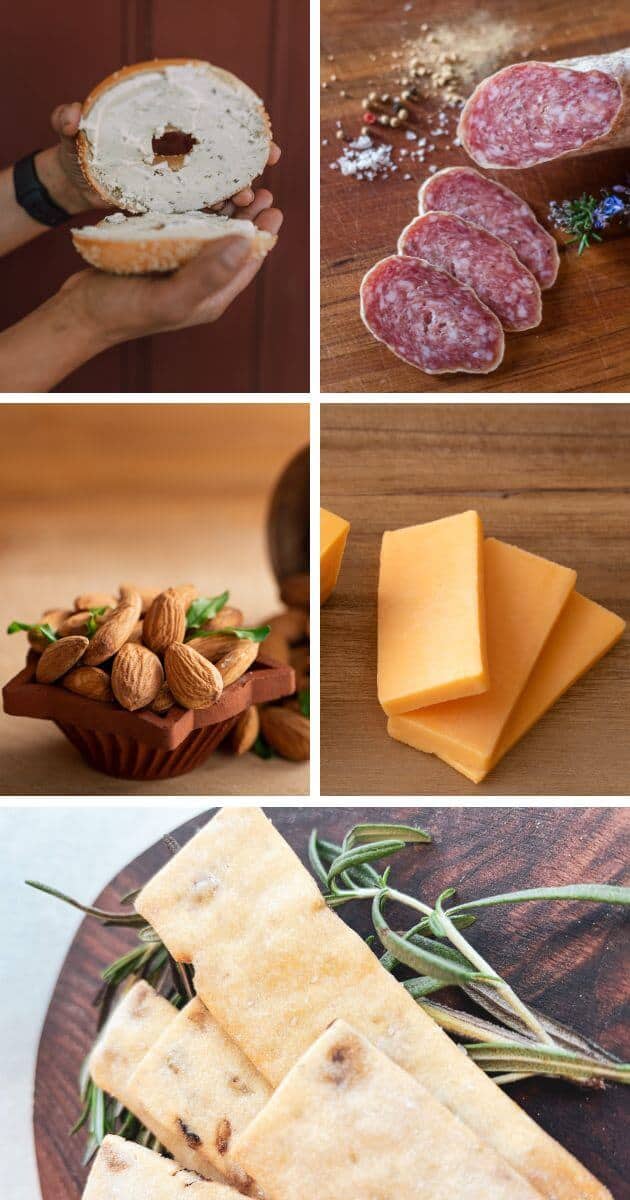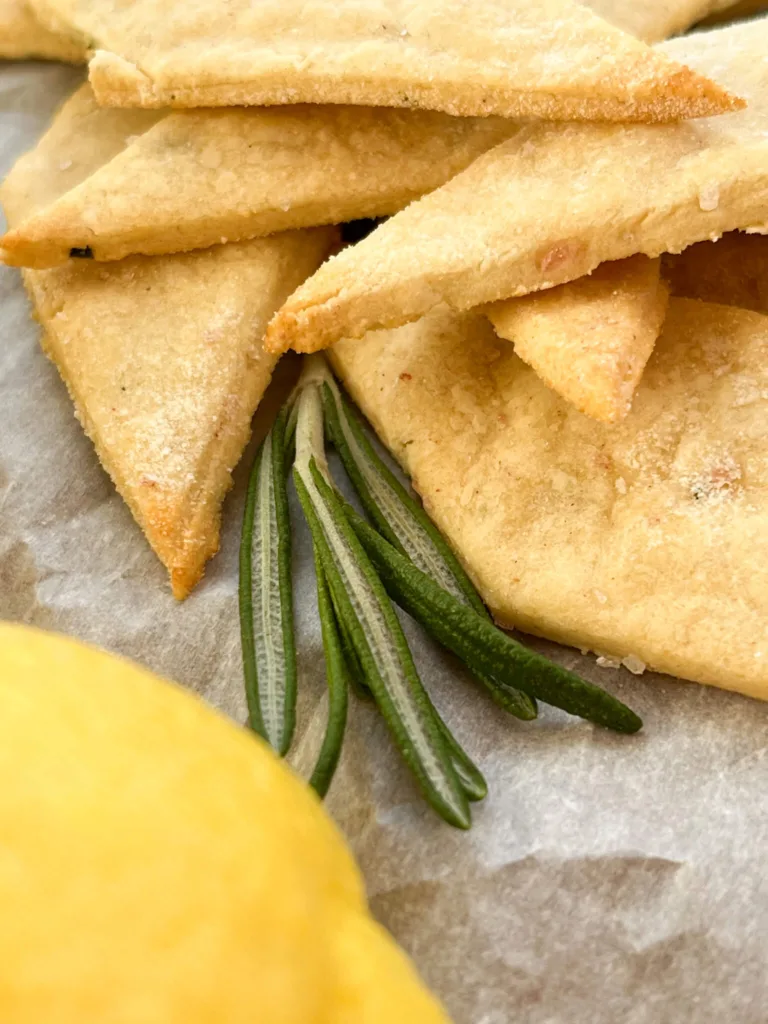How to Keep Gluten-Free Sandwiches From Falling Apart
Keeping gluten-free sandwiches from falling apart can be challenging because gluten acts as a binding agent. However, having celiac disease, I’ve discovered a few tricks to help keep sandwiches together, and I’m sharing them with you in this post.
Here’s a tasty recipe for a grilled gluten-free Reuben Monte Cristo Sandwich. It’s a delightful fusion of a classic Reuben and a crispy Monte Cristo!
Too busy to make this right away? Save it for later! Pin this post to your favorite board on Pinterest so it’s there when you need it!
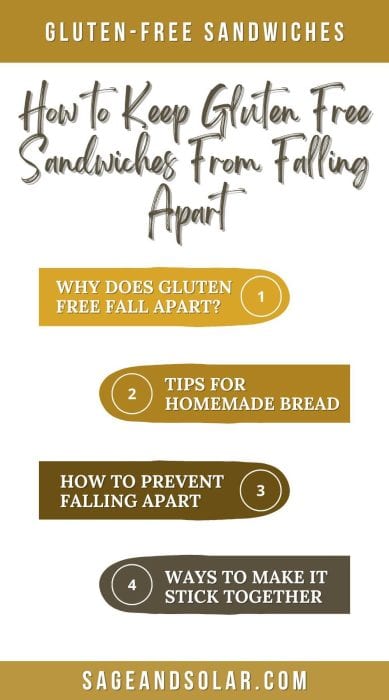
Why does gluten-free food fall apart?
The biggest challenge of using gluten-free bread, buns, and hot dog buns is that they fall apart easily. It’s mainly because they lack gluten, a protein found in wheat, barley, and rye that elasticizes regular bread dough.
The gluten forms a network in the bread that traps air bubbles produced by instant yeast. This gives the dough rise, elasticity, a chewy texture, and its ability to hold together.
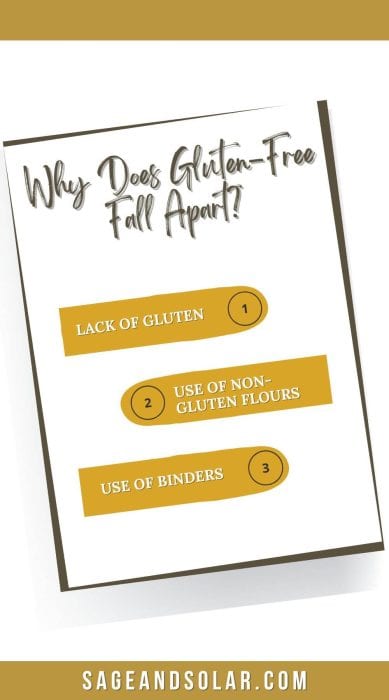
This post contains affiliate links.
With gluten-free baking, flours such as brown rice, coconut flour, potato starch, and almond flour are used, none of which contain gluten. These alternative flours require adding binding agents to give the baking structure.
Even with these additional dry ingredients, gluten-free baking still lacks the same support as traditional baking. This can result in a more crumbly and fragile texture, making gluten-free bread and baked goods more likely to fall apart.
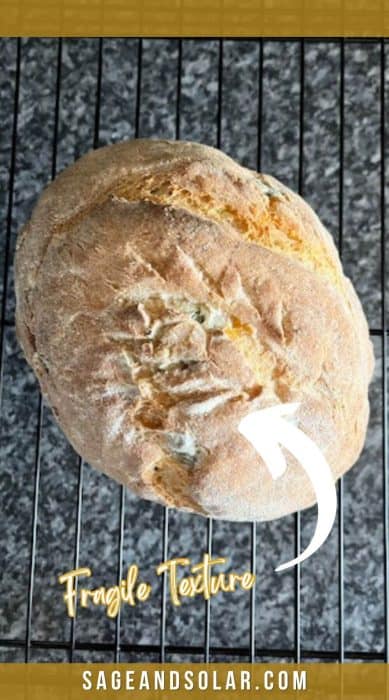
Tips for homemade gluten-free bread
If you make gluten-free bread, you know it takes a long time to perfect. I’ve tried many gluten-free recipes before finding one that tastes like real bread. The key is starting with quality ingredients.
- flours of gluten-free grains like chickpea, buckwheat, sorghum, and rice are popular for making bread
- tapioca starch, potato starch, and cornstarch are often used as well
- binders like xanthan gum, guar gum, and psyllium husk add structure
- yeast may or may not be used depending on the recipe (some gluten-free sourdough recipes do not use yeast)
- warm milk or water to activate the yeast
- room temperature ingredients like eggs and oil
- inclusions (or extras) like sunflower seeds, herbs, and spices add flavor
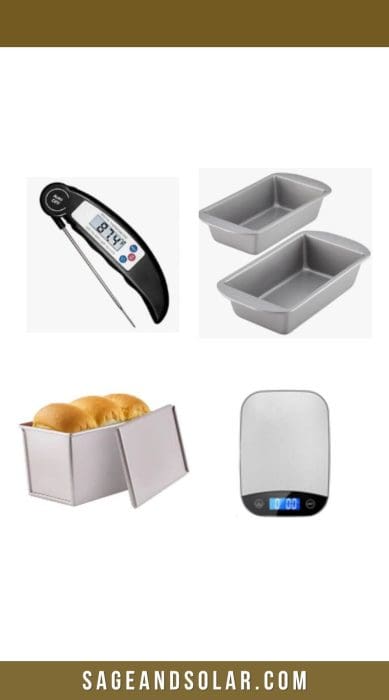
Essential tools for gluten-free bread baking
Additionally, I’ve found that using the right equipment to bake the bread for gluten-free sandwiches is important. Here are some of the tools that work for me.
I use a bread loaf pan to bake my gluten-free white sandwich bread. It allows the dough to rise to the top of the pan, maintain its shape, and get some support during baking.
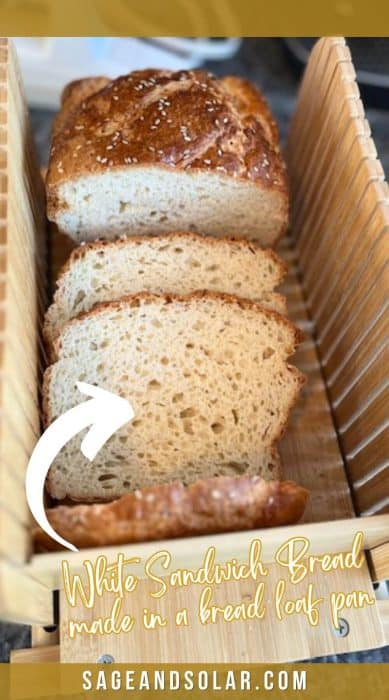
This Pullman pan is the one I use for making gluten-free cinnamon raisin bread. I leave the lid on for most of the bake and take it off in the last 10 minutes to release the steam. It makes a nice square loaf.
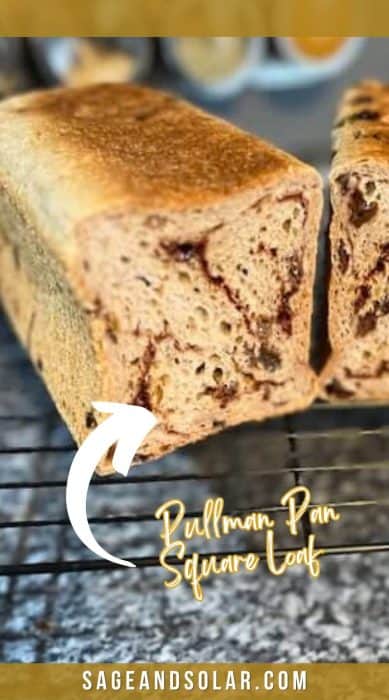
I also use a kitchen scale to measure all the ingredients in a loaf of bread. And even though I haven’t used a bread maker, its precise settings can be used for gluten-free dough too.
Sifting gluten-free flour using an all-purpose steel strainer adds air to the dough. I prefer using a strainer rather than a flour sifter but either will work.
A stand mixer like this KitchenAid is another valuable tool for gluten-free bread making. It easily combines gluten-free flour with other ingredients in the mixing bowl ensuring an even distribution of moisture and binding agents, crucial for a stable loaf.
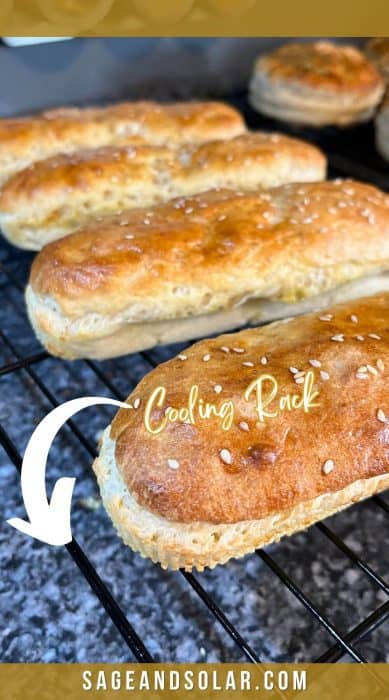
A cooling rack or wire rack is used to place the loaf of perfect bread on after baking. It will help the gluten-free flour in the bread absorb and release extra moisture until it has a chance to cool.
Oven thermometers are also essential for gluten-free baking. They ensure you are baking at the correct temperature for your bread recipes. I use a digital instant-read thermometer to take the temperature of my white bread before removing it from the oven. I always bake it to an internal temperature of 207 degrees Fahrenheit (97 degrees Celsius). This ensures that it is fully baked and not gummy inside.
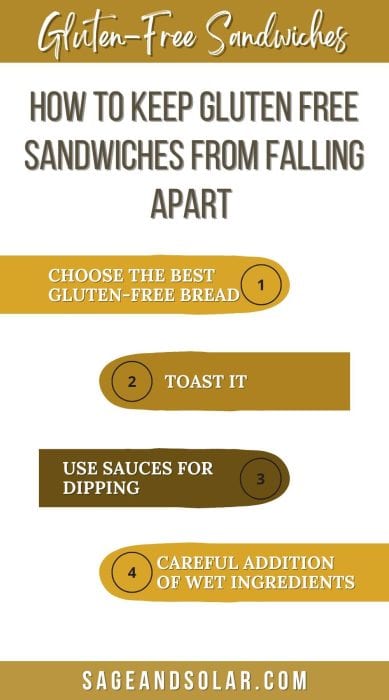
How to prevent a gluten-free sandwich from falling apart
If you’re like me, you know there’s nothing worse than having a delicious gluten-free sandwich fall apart as you eat it! Try this grilled Reuben Monte Cristo Sandwich Recipe with its golden crust that stays together well. Or, a Classic Burger on a gluten-free bun and these tips to keep it intact!
First, choose the best gluten-free bread with a good structure and texture. Look for ingredients like xanthan gum, guar gum, and psyllium husk powder which are binders that give it strength.
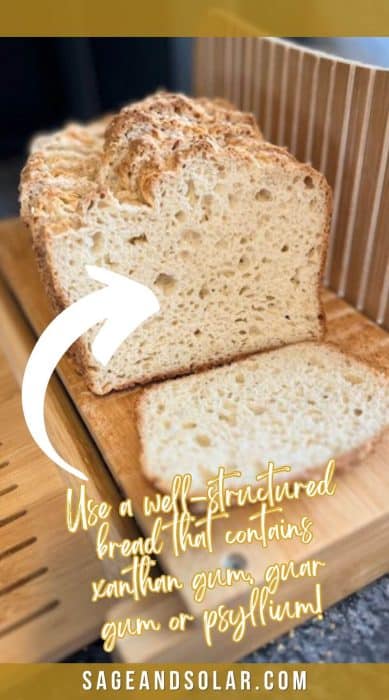
Giving the gf bread a quick toast before eating it can also give it strength. I even toast gluten-free sandwich bread twice before eating it, but that is a personal preference. Toasting the bread also adds a golden brown color which makes the gluten-free bread and bread products more appealing.
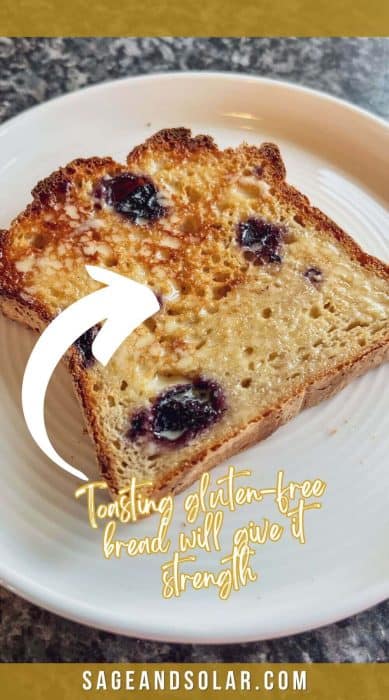
Panini grills provide the best results when grilling both sandwiches and wraps. I spray the surface with non-stick spray before using to make sure nothing sticks!
Another thing you can do for gluten-free sandwiches is to use sauces for dipping rather than spreading! This prevents the bread from getting soggy and falling apart.
Adding moisture to a sandwich is usually a good thing when using a good sandwich bread. But, when using a gluten-free sandwich bread, the extra moisture interacts with the alternative ingredients. It affects the cohesiveness of the bread and leads to a less stable product (crumbly and soggy). The best thing to do with gluten-free bread is to spread a very small amount of sauce on your favorite sandwiches. Then, use the rest for dipping!
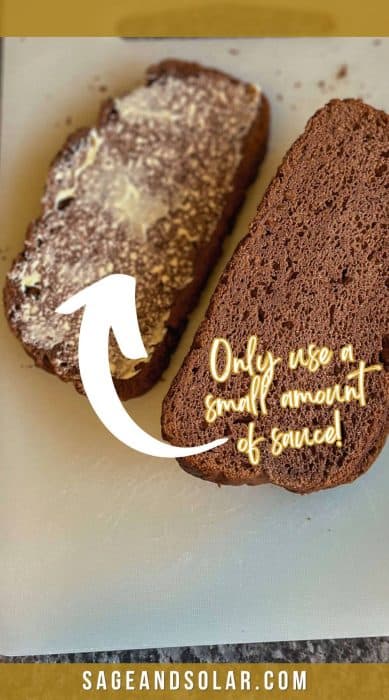
The first time I ordered a gluten-free burger in a restaurant, the bun fell apart because there was too much sauce. I ended up eating it with a fork and knife but learned to ask for the sauce on the side to keep the bun from getting soggy.
Restaurants apply the same amount to all sandwiches, which is just too much liquid for a gluten-free bun. I’ve also found that a small amount of butter is ok, but mayonnaise, salad dressing, and spreads like hummus, pesto, and cream cheese should be limited as they can destabilize gluten-free buns and make them fall apart.
Additionally, it’s a good idea to skip the olive oil on gluten-free Caprese sandwiches or Muffulettas to help keep the bread intact.
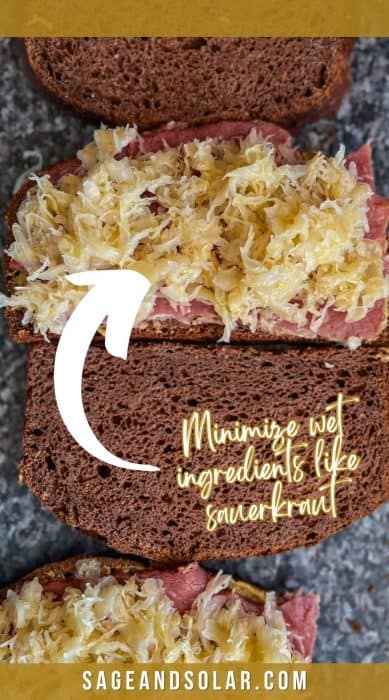
To make the perfect sandwich, like my gluten-free Reuben Monte Cristo using deli meats and wet ingredients like sauerkraut is to remove as much moisture as possible before layering them into the sandwich. The best way to add the wet ingredients is to squeeze the moisture out or lay them on paper towels before using. This also applies to pickles, jalapeno peppers, and kimchi.
How to make a sandwich stick together
If your gluten-free bread already has great structure and you’ve limited sauces and wet ingredients, adding cheese or vegan cheese can keep it from falling apart. When it’s melted and slightly cooled, the cheese acts like glue and holds the sandwich together.
Peanut butter and almond butter also work well due to their lower moisture content. Avocado toast is another great option for a gluten-free open sandwich.
If you love these tips for keeping gluten-free sandwiches together, please help me share them on Facebook and Pinterest so that others can enjoy them too.
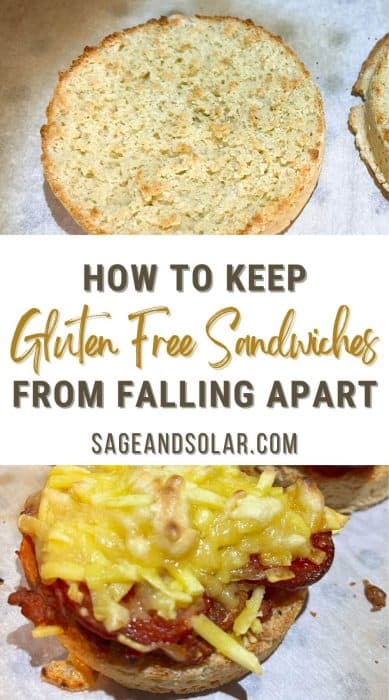
Final tip – when you pick up a gluten-free sandwich or burger to take a bite – don’t put it down! Keeping a tight grip on it while you eat will help it stay together better.
